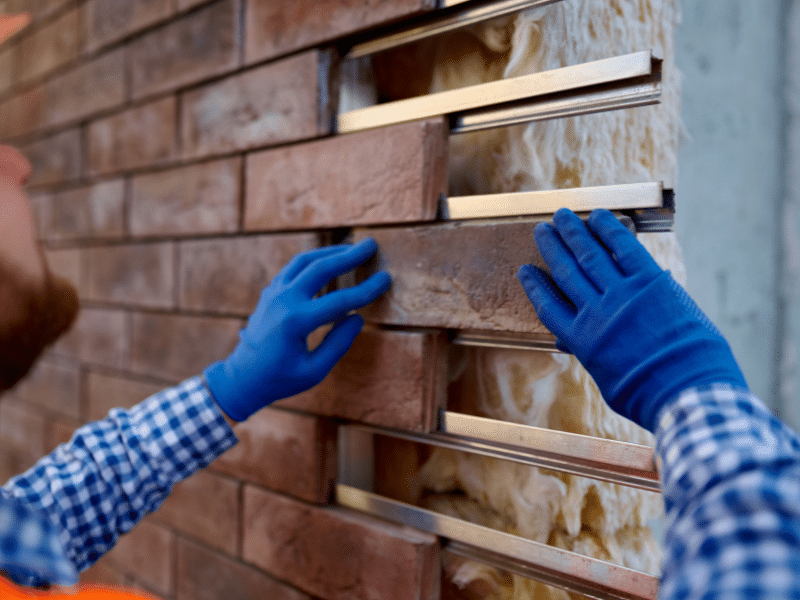Choosing the right cut stone for wall cladding can significantly enhance your property’s aesthetic and functional value. With summer being an ideal time for exterior renovations, understanding the various options available for cut stone can help you make an informed decision that suits your design preferences and durability needs. In this blog, we’ll explore the different types of cut stone for wall cladding, their benefits, and how to choose the best option for your project.
What is Cut Stone for Wall Cladding?
Cut stone for wall cladding refers to natural stone that has been quarried, cut, and finished to be used as an exterior or interior wall covering. This type of cladding provides a timeless and elegant appearance while also offering robust protection against the elements. Popular choices include granite, limestone, slate, and sandstone, each offering unique characteristics and benefits.
Types of Cut Stone for Wall Cladding
1. Granite
Granite is one of the most popular choices for cut stone for wall cladding due to its durability and wide range of colors. Known for its hard texture and resistance to weathering, granite is ideal for both interior and exterior applications. During the summer, granite’s thermal stability helps keep buildings cool by absorbing and gradually releasing heat. Its rich aesthetic appeal makes it suitable for modern and traditional architectural styles.
2. Limestone
Limestone is another excellent option for wall cladding. It is relatively softer than granite, which allows for intricate carving and detailed finishes. Limestone comes in a variety of shades, including white, beige, and gray, offering a neutral backdrop that can complement various design elements. In the summer, limestone’s light colors can reflect sunlight, reducing heat absorption and keeping interiors cooler.
3. Slate
Slate is a fine-grained, metamorphic rock known for its natural cleft surface and distinct texture. It is available in shades of gray, green, purple, and black. Slate is highly durable and resistant to water, making it a suitable choice for areas exposed to moisture. Its unique texture and color variations can add a rustic charm to any building. In the summer, slate’s density helps maintain a stable internal temperature by insulating against external heat.
4. Sandstone
Sandstone is a sedimentary rock composed of sand-sized minerals or rock grains. It is available in a range of colors, including tan, yellow, red, and brown, offering a warm and inviting appearance. Sandstone is known for its durability and ease of workability, making it a versatile option for various architectural styles. During the summer, sandstone’s natural porosity allows it to “breathe,” helping to regulate temperature and humidity levels.
Benefits of Using Cut Stone
1. Aesthetic Appeal
Cut stone for wall cladding provides a timeless, elegant look that enhances the visual appeal of any property. The natural variations in color and texture add depth and character to buildings, creating a unique and sophisticated appearance.
2. Durability
Natural stone is incredibly durable and can withstand harsh weather conditions, including summer heat. It is resistant to fire, pests, and decay, ensuring a long-lasting investment that maintains its beauty and structural integrity over time.
3. Thermal Performance
Many types of cut stone for wall cladding have excellent thermal properties, helping to regulate indoor temperatures during the hot summer months. Stones like granite and limestone can absorb and release heat gradually, providing natural insulation that reduces energy costs.
4. Low Maintenance
Cut stone requires minimal maintenance compared to other cladding materials. Regular cleaning and occasional sealing are usually sufficient to keep the stone looking its best. Its natural resistance to weathering means it retains its appearance and functionality with little effort.
Choosing the Right Cut Stone for Your Project
When selecting cut stone for wall cladding, consider the following factors:
- Climate: Choose a stone that can withstand the local climate conditions, especially if you live in an area with extreme temperatures or high humidity.
- Aesthetics: Consider the color, texture, and overall look you want to achieve. Ensure the stone complements the architectural style of your property.
- Budget: While natural stone can be more expensive upfront, its durability and low maintenance costs make it a cost-effective option in the long run.
- Installation: Professional installation is recommended for the best results. Ensure you hire experienced contractors who understand the nuances of working with natural stone.
Conclusion
Cut stone for wall cladding is an excellent choice for enhancing the beauty and functionality of your property, especially during the summer months when exterior projects are more feasible. By understanding the different types of cut stones available and their benefits, you can make an informed decision that meets your design and durability needs.
For expert advice and high-quality cut stone for wall cladding, contact Skyline Quarry. Our team is dedicated to providing the best materials and services to help you achieve your architectural vision.

